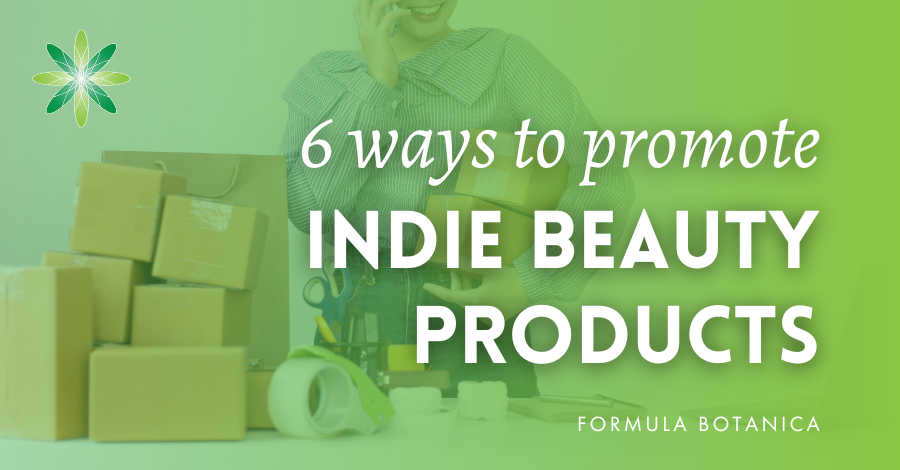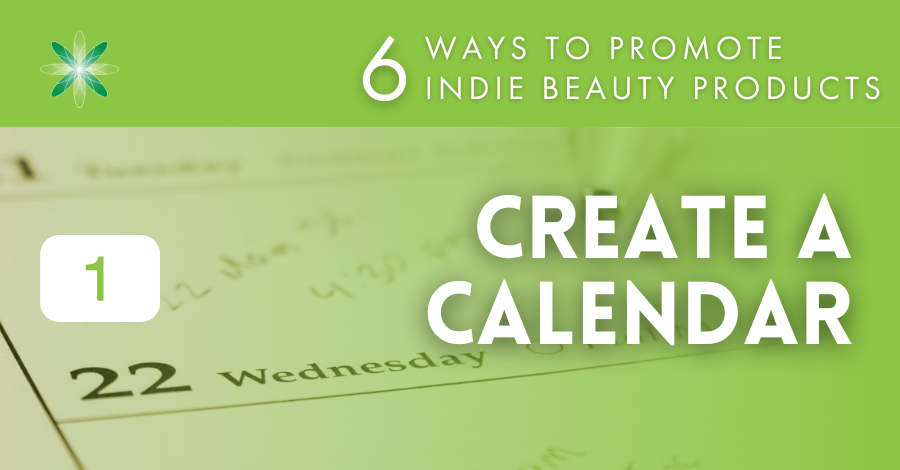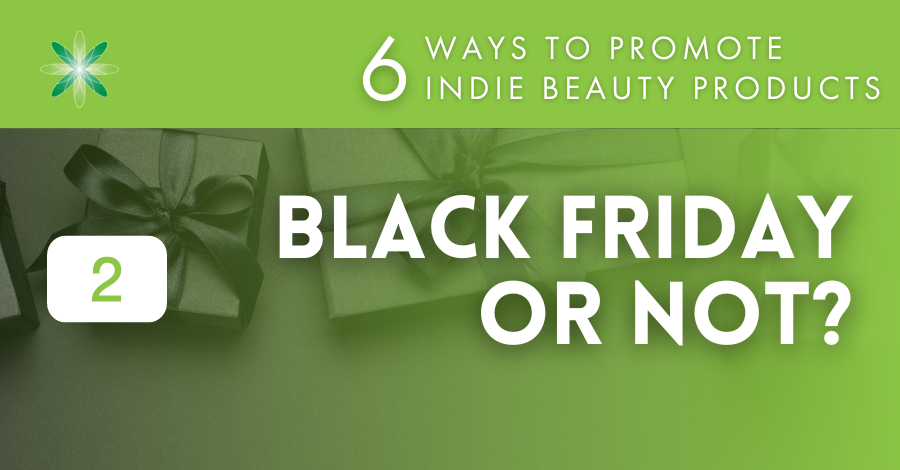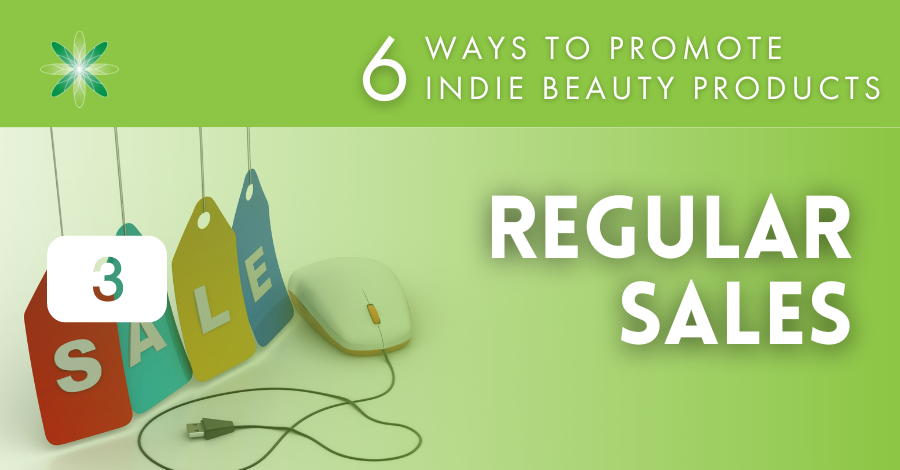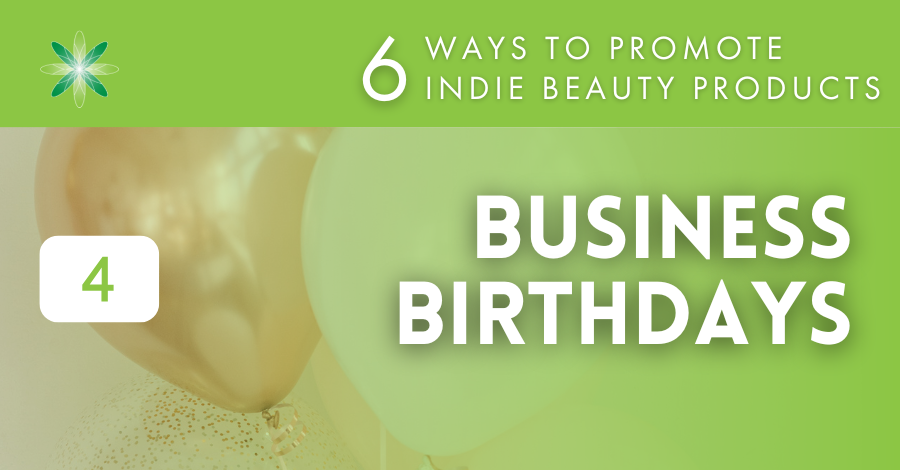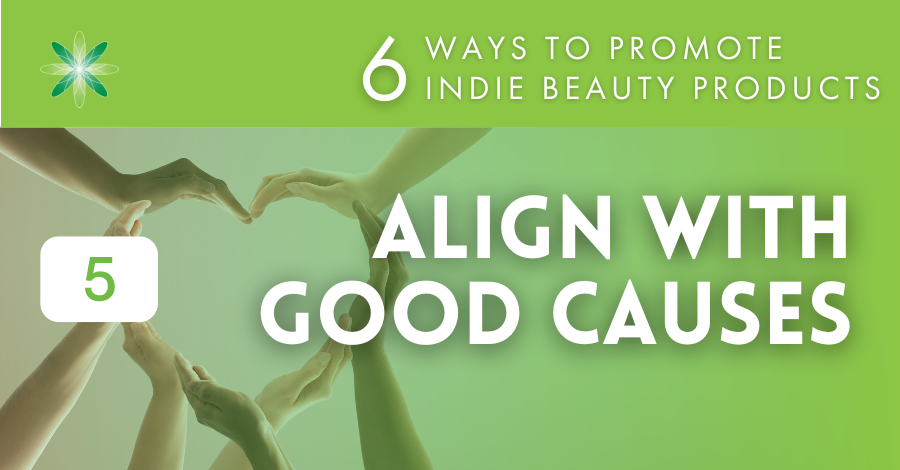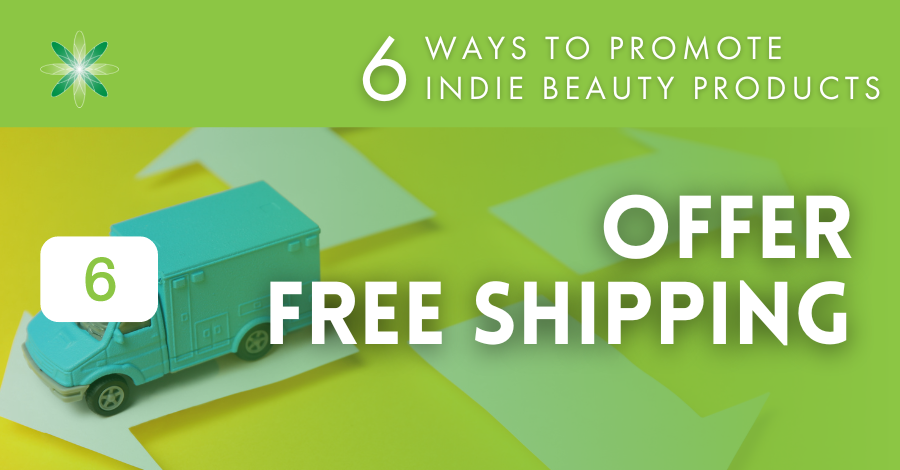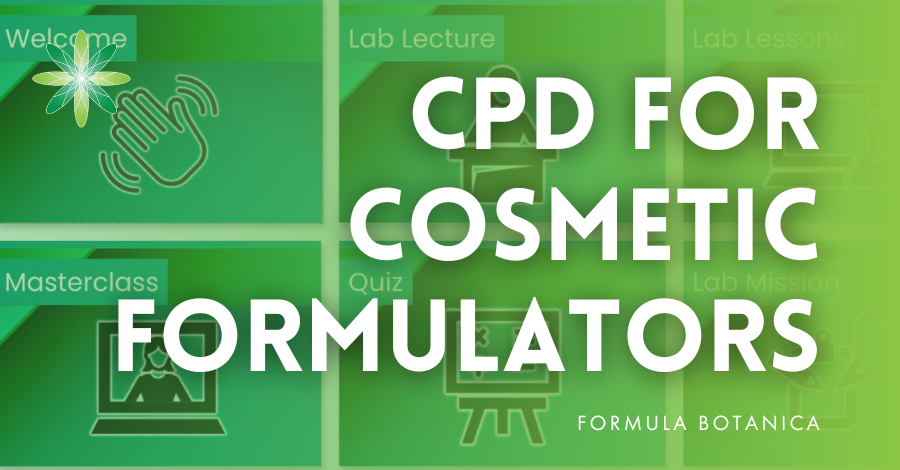You’ve learnt to formulate, and you have probably spent more than a year building your brand, getting your website online and sourcing that ideal, sustainable packaging. Now you are ready to sell your gorgeous natural skincare or haircare products that mean so much to you. But, there is one thing missing: you need to learn how to promote and sell your products.
You will need viable, profitable ways to promote your cosmetics during the year. To do this requires thinking like a salesperson and marketeer rather than as a formulator or brand designer. We know this can seem daunting, but there are some achievable, useful ways to promote your products, get the sales in, and not undermine the value of your brand or devalue its authenticity and mission.
If you have planned your brand and product range carefully by researching your target market and mapping out an avatar for your ideal customer, then you are off to a good start in understanding what types of promotion make sense. If you’d like some guidance on the beauty brand planning stage, we have several articles on this site to help you. Here are some to read first:
How to choose a name for your beauty brand
How to start a beauty brand on a small budget
10 steps to a beauty brand business plan
How to sell homemade cosmetics (this takes you through the compliance side)
How to start a cosmetics business at home
Start a small beauty business (hear from some of our graduates about their experiences as small businesses.)
In this article, we suggest six promotional methods to consider. Each has its merits and may or may not resonate with your indie beauty brand. The promotions below can help you, among other things:
- reward loyal customers;
- get your brand name and products out there and known;
- plan your yearly sales forecasts;
- shift stock (before it expires or you bring new products on stream);
- link your brand with or boost your brand’s donations to good causes, charities, and so on; and
- tie in with annual festivities or key dates in your part of the world.
Their overriding aim is, of course, to get some (hoped-for and guaranteed) sales in on a regular basis throughout the year. A viable indie beauty business is one that has an executable sales and marketing plan, a part of which will be a calendar of your key promotions. But as you will see, promotion can be about more than monetary gain.
Here are just 6 suggestions for promoting your indie beauty products.
1. Create a yearly promotions calendar
Every business owner should have a yearly promotions calendar for their business. You create this yourself and take control of it no later than the last quarter of the preceding year. It takes more time than you expect to prepare ahead for promotional periods or even a flash sale running for one day.
We suggest going as far as printing out a copy of your yearly calendar to pin up near your desk. This gives you a quick glance at how many promotions or sales you are offering in that year. Mark on it timetables of what you have to do in the run-up to promotions. For instance, online promotions may require special landing pages on your website, the generation of unique links to share on social media so you can monitor the effectiveness of various platforms. and so on.
The calendar keeps you organised, but if you feel overwhelmed at any stage or find a certain type of promotion didn’t go well – or conversely, went very well – you can adjust the wall planner to suit. Starting the year with a promotional plan helps you set your yearly sales targets too. Towards the end of the year, review what worked and what didn’t do so well.
2. Black Friday or not?
Black Friday started in the States in the 1950s as the day marking the start of the Christmas shopping spree. Taking place on the first Friday after the US Thanksgiving holiday, Black Friday has now swept the world as a major promotional and selling period. It tends now to straddle the weekend or a full week and crosses cultures.
It is a topic that is either loved or hated by most. As a period in which we see unbridled consumerism, we felt we just had to tackle Black Friday in two episodes of our Green Beauty Conversations podcast:
Episode 135: Sustainable alternatives to Black Friday.
Episode 136: Why buy natural beauty products? (In this episode, we urged listeners to support indie beauty firms all year round, not just on Black Friday.)
However, Black Friday can’t be ignored in any list of ways to promote your indie beauty products. It is, after all, an opportunity to make sales, and the volumes made during this period can help you get closer to hitting the revenue goals you set out for the year.
If you decide to reduce prices, create special promotional bundles of products or offer other incentives for Black Friday, ensure your efforts suit your brand – its voice, mission and product positioning. Do not feel you must follow the lead of other indie beauty brands if their promotions – or lack of them – do not feel right for you. Only you can make the choice to sell on or boycott Black Friday. You will need to know your customer base and work out if they are tuned in to Black Friday.
We urge you to listen to our forthcoming podcasts on Black Friday to help you work through the issues and discover the nuances in our love-hate relationship with this mega-shopping day. We have seen beauty brands jump on the Cyber Monday bonanza too, as that day has evolved from being purely about tech and IT products and services to include smaller ticket items and different product categories.
3. Regular promotions and sales
Routine discount sales and promotions happen all year round. Our inboxes seem to have a dozen sales-related emails each day. Clearly, this type of promotion helps reward your customers and newsletter subscribers and attract new customers. However, if you run discounts too often, your customers will come to expect them and wait for the offers rather than buy at full price. So, our advice is to run sales and routine discounts only a few times a year.
On the plus side, if your customers do wait for your sales, they are likely to stock up by buying more at once, so you gain by moving stock and boosting revenue. With your yearly wall planner, you can see exactly when it makes sense to run another sale.
If you are launching a new product, a promotion makes sense, as it is highly likely that your established customer base will be incentivised to buy something new from you, especially if it offers added benefits, an upgraded formula or unique properties. If you have even a small number of products in your line, try bundling them together at a discounted price. We have seen our community come up with creative ways to do this, such as “the stress-free Mom bundle” when school holidays loom large. There is no limit to what you can come up with as a theme.
For some ideas from our graduates on how they package their indie products into gift sets, see our post:
A good idea is to match a product that sells less well with a more popular one (so you can shift stock) or to create a “try me” bundle that includes a mix of smaller sizes of your products. While beauty product sample sizes can be less sustainable, trial, mini or travel sizes can be useful to run promotions with. Again, your brand ethos needs to be in tune with your promotions; if you are promoting the sustainability of your brand but offer a lot of little plastic pots as free samples or in bundles, it might not go down well with your target customers. Get creative, plan well ahead though, and you can come up with alternative ways to promote trials of your products. This podcast episode gives you some food for thought:
Podcast 111: Are beauty samples sustainable? Hear Credo, the largest US-based clean beauty retailer, discuss some innovative ways the beauty sector can wean itself off plastic vials, pots and sachets of promotional samples.
Flash sales are a great way to boost sales in a short time. Nearly all of us suffer at some point from the “fear of missing out,” or FOMO. The idea that the discount or offer will be taken away in less than 24 hours usually proves a winner in getting sales in fast.
One innovative tactic that our Course Mentor for our Diploma in Beauty Brand Business Management and brand owner suggested, is to piggy-back on other big-ticket sales’ days. Take advantage of well-known sales’ days to offer discounts on your customers’ shopping baskets too. As our business mentor said, “I offered a discount to my customers’ entire purchase just because it was Amazon Prime Day. Now, I don’t sell on Amazon, but I took advantage of the 24 hours they promoted this massive sale, and I got so many orders it was great”.
4. Seasonal sales and your business anniversary
It is now common for indie brand founders to announce their business anniversary, usually on social channels like Instagram. Your first, or another, successful year in business is a nice occassion on which to share your celebration and reward your followers and customers with a limited-time promotional offer. This is like running a flash sale, but in a less “salesy” way.
Aside from the revenue generated when you share a birthday offer, your business anniversary has spin-off benefits for your brand in other ways. You have an opportunity to share your founder story, talk live to your audience on social media, and do a behind-the-scenes look at a day in your life, mentioning how it was at the start and how far your customers have helped bring you and your indie brand. We’re all curious about the person behind the brand, so use your anniversary to talk to your customers so you can take them with you on your next chapter.
In a similar vein, you can tie promotions in with national holidays, long public holiday weekends or special festive periods in your part of the world. Again, be aware of how your customers, current and potential, will view the association and if they will be receptive to it.
5. Align with good causes
There are many schools of thought on whether and when in your brand journey you should link to charitable entities and good causes, either formally and long-term or ad hoc on specific days, such as the topical international days that feature during the year.
As we have heard in various guest episodes of our Green Beauty Conversations podcast, it is still early days for customers to specifically seek out – or even be aware of – brands that make percentage donations to causes, charities, and so on, or are themselves attaining milestones in aspects of sustainability. Formula Botanica graduates and co-founders of the international indie beauty brand BYBI told us that they had not seen, at that point, an upswing in sales solely on account of their becoming a certified carbon-negative beauty brand, which was a hard-won achievement and done as part of their unswerving commitment to sustainability.
Also, it may be advisable to donate, for example, a percentage of sales only when your brand is viable and profitable. An unsustainable brand is no meaningful partner for a good cause that may be relying on your commitment and cash donations.
However, this does not mean that there is no promotional mileage in aligning with entities, international days and causes that fit with your brand’s ethos. Promotions need not only bring in sales. The right associations can prove valuable in terms of customer awareness and PR. But, talk the talk without genuine commitment and your customers, the media, and other parties are likely to be quick to point this out.
From the outset at Formula Botanica, we have pledged annual donations to two chosen not-for-profit organisations that work in the field of sustainable habitats and livelihoods. In doing so, we have brought our students and graduates with us and encouraged them to support these NGOs too. Our PR has helped widen the audience for our charitable partners.
The best way to view support of NGOs, charities, international days and similar initiatives is as promotions that benefit the recipient. Publicise your role in supporting others, as it helps everyone gain, but do so with a generosity of spirit rather than as a way to gain monetarily for your brand.
6. And finally: free shipping or not?
Free shipping is another grey area. It can prove very enticing to new subscribers, and indeed all customers, every so often. However, just as with regular sales, expect your customers to wait for free shipping periods, which may mean they also bulk buy to take advantage of it.
Most indie brands find shipping costs expensive, as they are unlikely to secure competitive prices with couriers on account of the low volume of business they give their shipping partners. If free or discounted shipping is something you wish to offer regularly, ensure you price it – or enough of the costs – into product prices so you don’t take a substantial revenue hit during free shipping periods.
It is a tricky area to navigate as delivery costs today vary greatly month by month as fuel surcharges soar on account of the volatility of world fuel prices. Our Business Mentor said she does not offer free shipping at the moment as her business simply can’t afford to pay shipping for all of its customers: “I have never had a complaint about it yet. Hopefully it stays that way.”
FREE TRAINING
Learn how to become an
Organic Skincare Formulator
FREE TRAINING
How to become an
Organic Skincare Entrepreneur
FREE TRAINING
How to become an
Organic Skincare Entrepreneur
Leave us a comment

Liz was Formula Botanica’s Content Coordinator between August 2020-2024. Liz worked as a professional blogger, journalist and site developer for many years and was also part of the Formula Botanica student community. Read more about the Formula Botanica Team.

